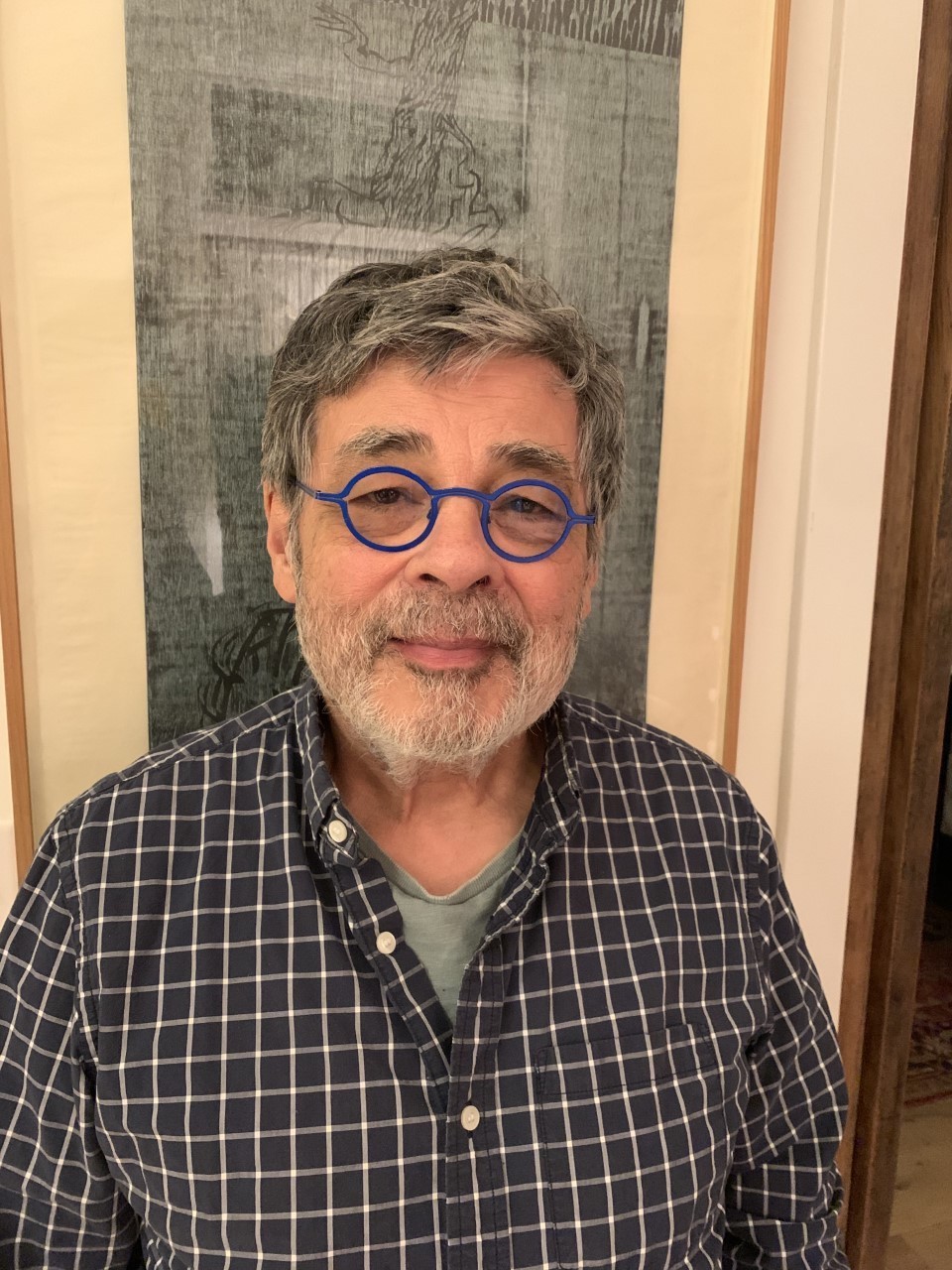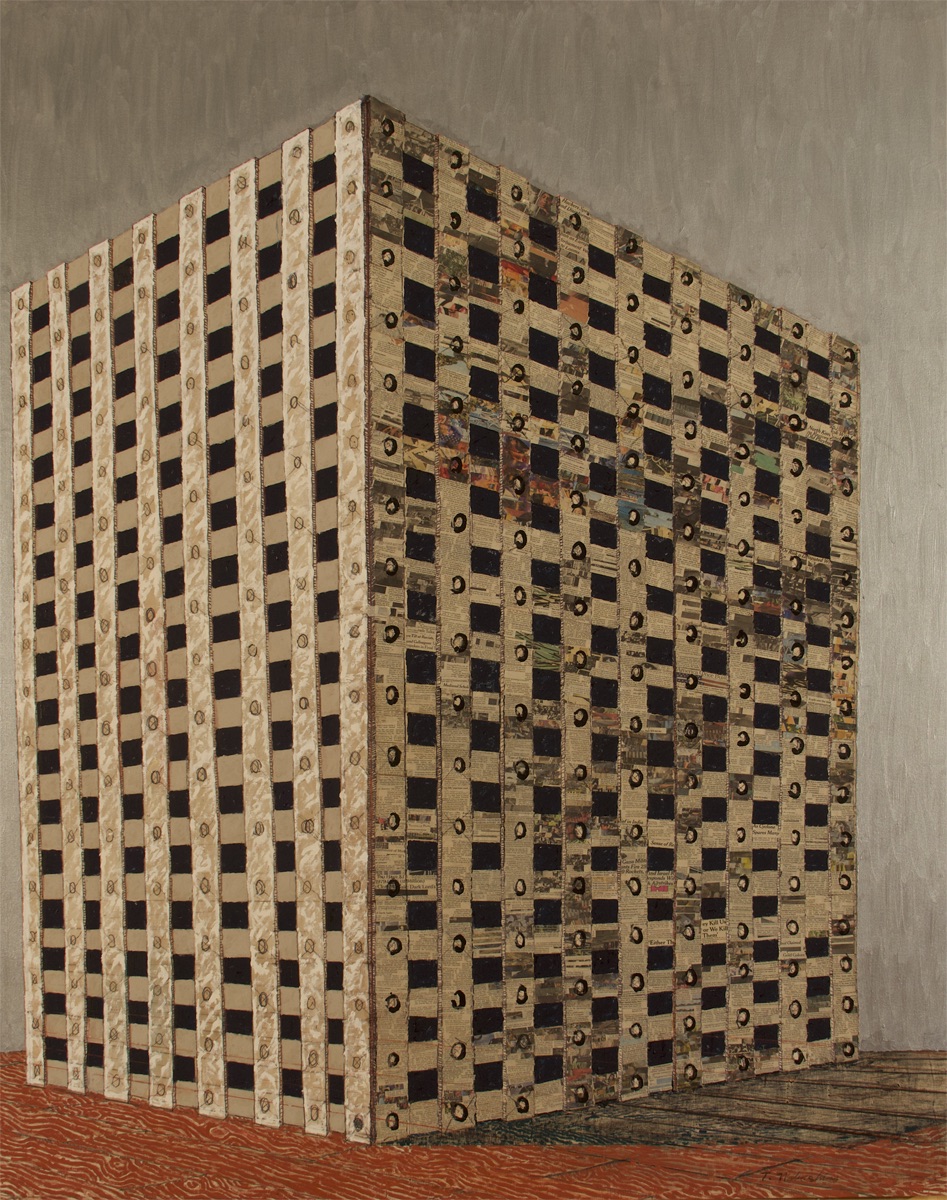
Tule Lake/Manazanar Jail, 2019
oil and mixed media on canvas, 87”X70”
Tule Lake/Manazanar Jail, is a metaphor for Nakashima’s concern about the encampment outside El Paso housing some of the 2,000 migrant children near Crystal City, TX, another of the concentration camps. The jail image is based on the steel cages used to house certain Japanese Americans in the incarceration camps at Tule Lake and Manzabar during WWII.

Cage, 1991
oil, gold leaf and mixed media on canvas, 87” x 98”
Nakashima grew up during World War II, as America was confining his extended family members and others of Japanese ancestry to incarceration camps. His knowledge of this occurrence is a major theme of his allegorical work. In this painting, the illuminated empty cage hovers in indeterminate space, against a dark background to show arrows pouring into the cage nullifying the feeling of safety. Nakashima reflects that the rectilinear volume of the chicken cage is much like the aerial photo taken of Minidoka which caged Nakashima’s grandparents, uncles, aunts, and cousins.
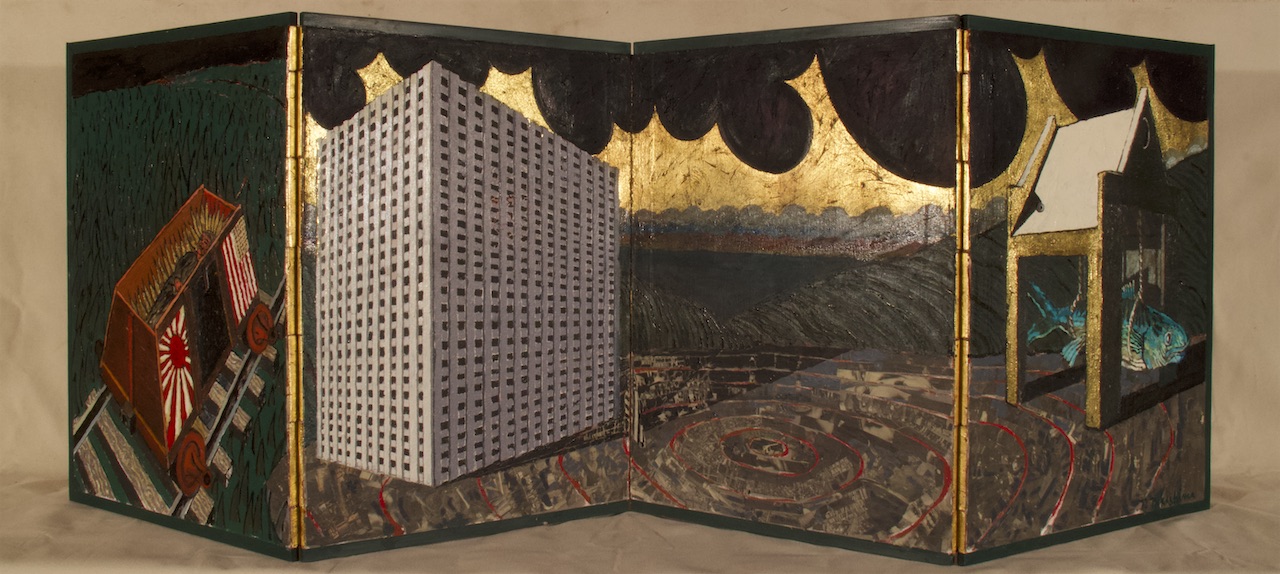
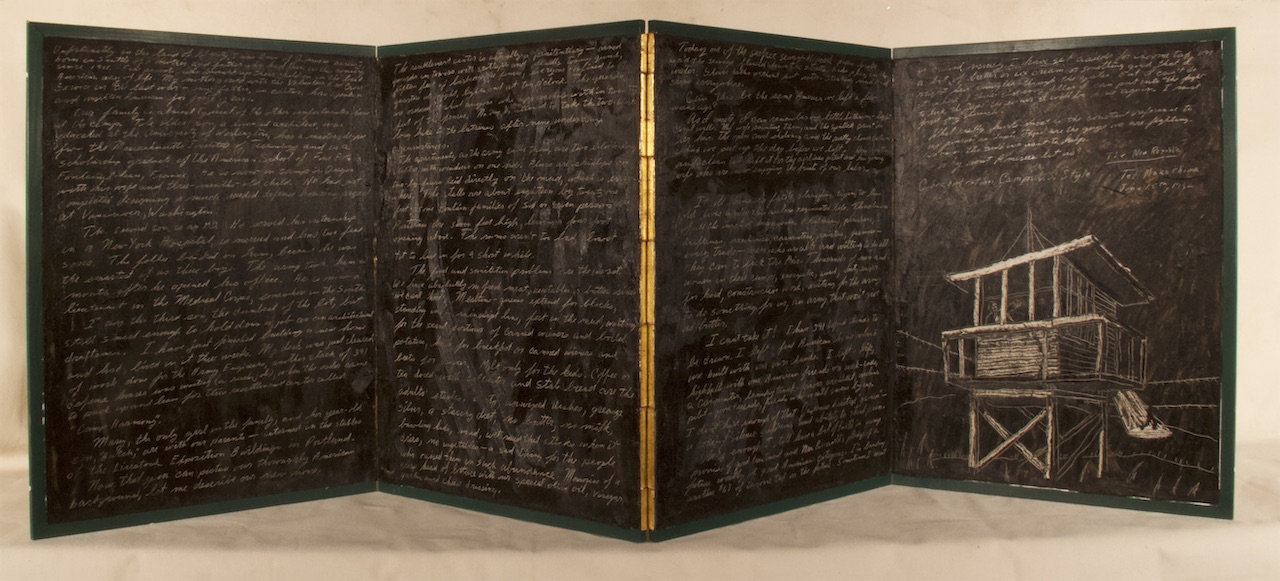
Barrier Against the Wind, 2019
Byôbu (Japanese screen)
acrylic, newspaper collage and mixed media on folding screen, 24” x 72” x 12”
Barrier Against the Wind unites themes of Nakashima’s iconic images sanctuary, cage and portrait under the general theme of incarceration. This four panel byōbu allows Nakashima to juxtapose past and present themes in his work in such a way as to bring new life to a different time. The portrait theme is represented by his uncle Ted who wrote an essay for The New Republic titled Concentration Camp American Style which is collaged onto another panel in the screen. The Mendota cage addresses the events on the US South western borders and the last panel (sanctuary), is derived from paintings by Giotto and Sassetta.

Tule Lake Requiem: For Ted Nakashima, 2020
Each piece in the edition is uniquely assembled and hand colored by the artist.
Only one black and white image has been left intact.
Edition Series: 10 artist proofs, 10 donor proofs
Edition of 30 artist book/screens
archival books with acid free paper, watercolor, mixed media
Installed: 6” high x 36” wide x 2” deep
Closed Book Form: 6” x 4” x 1/2”
View Work Statement
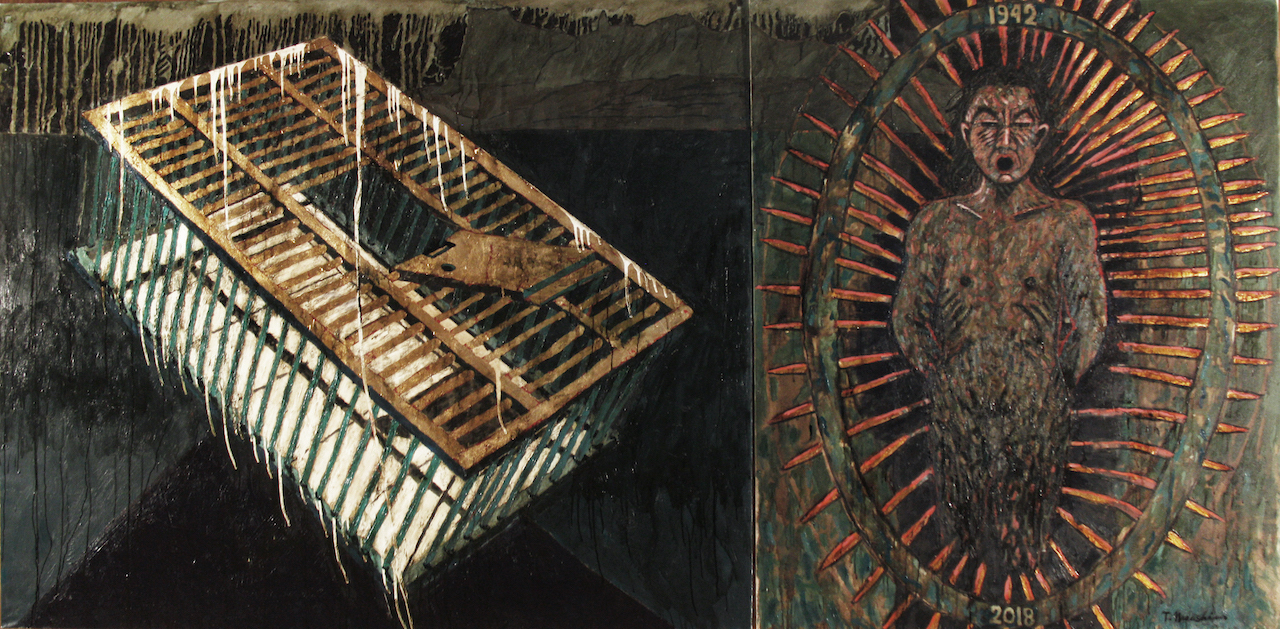
Martyr & Cage, 2020
Oil on canvas, diptych, 84” x 140”
We were often told that the Japanese Americans were put in cages to ‘protect’ them from harm. Of course, those who said that probably said similar things about putting chickens in cages to protect them from fox. Enough said about that.
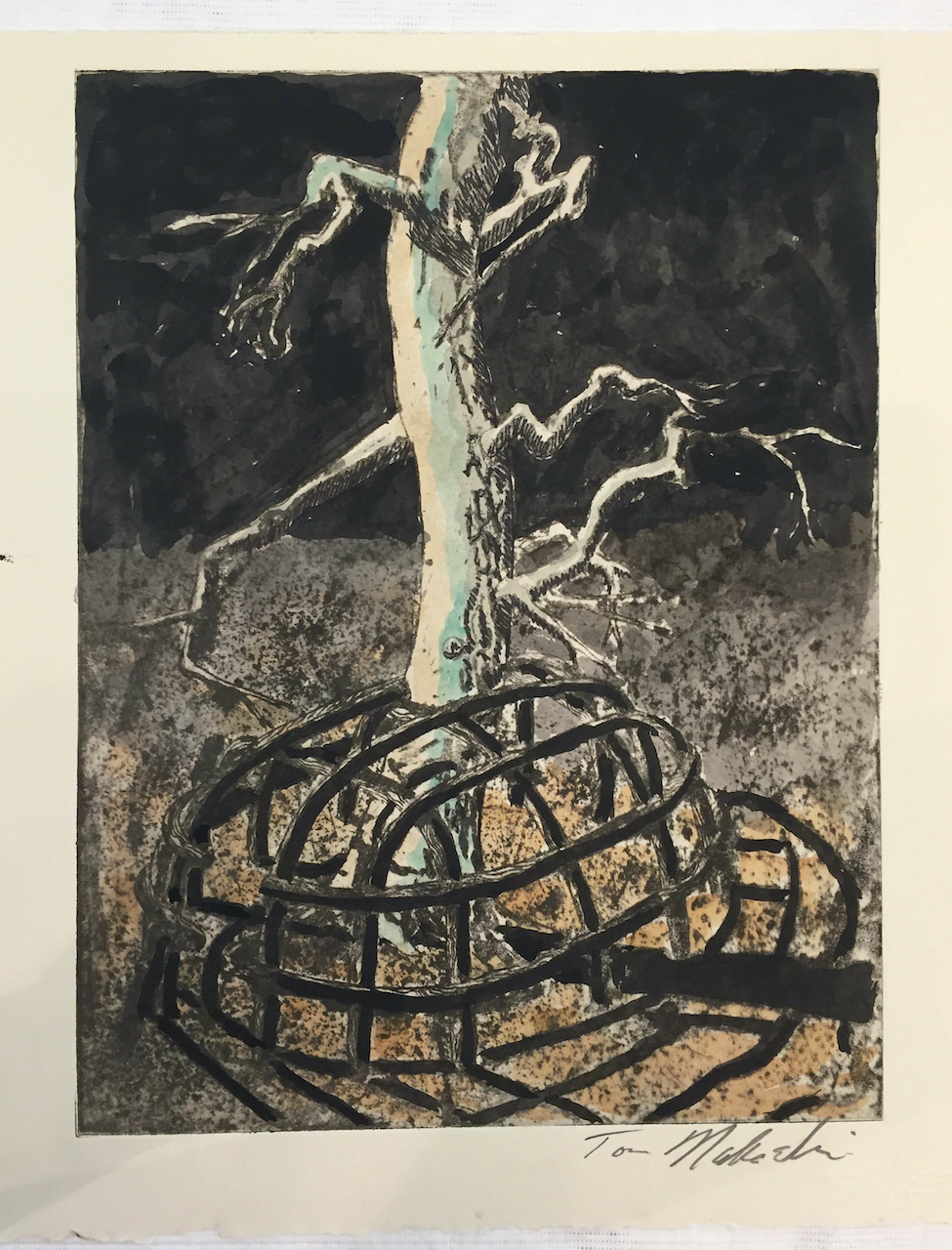
Wigwam & Tree, 2018
solar intaglio print, 10” x 8”
I first used the “Wigwam & Tree” for a print edition for The Greenpeace Editions. Then it was an ecological statement. I have recently reactivated this theme for the subject of incarceration of Japanese Americans and present-day imprisonments at our southern border. The tree I originally sketched at the National Arboretum was in fact not a “free” tree. It was an tree in confinement – a bonsai. Not “free nature” but nature controlled!







